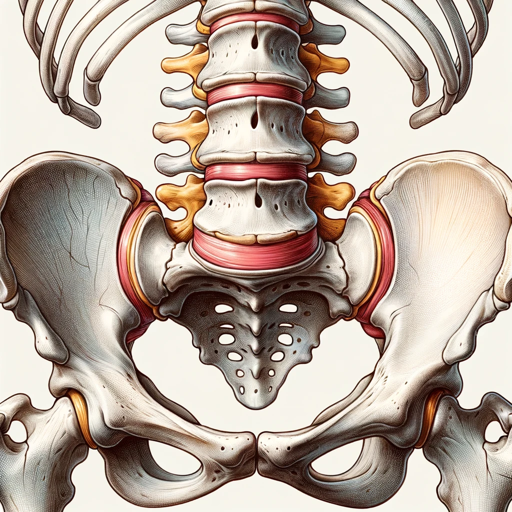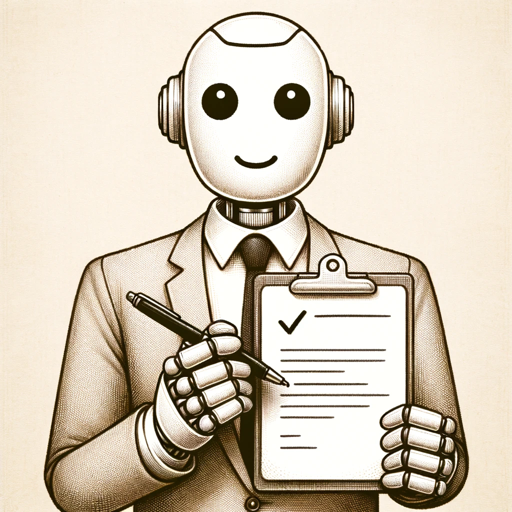Tennis Elbow(Lateral Epicondylitis)-AI-powered tennis elbow assistant
AI-driven insights for tennis elbow management
What causes tennis elbow? Explain histology in elbow
How is tennis elbow treated?
Can exercises help with tennis elbow?
What are the symptoms of tennis elbow?
Related Tools
Load More
Physical Therapy
Provides information on physical therapy and exercises.

Racket Expert
Explains racket code details on request

Orthopedic Expert
Your go-to AI for comprehensive orthopedic care, occupational health, and tailored nutrition.

Tennis Insight
Friendly and informed tennis betting tipster with up-to-date web insights.

Low Back Pain
1. Pain indicate that cells in your back is dead, damaged and weak. 2. Blood circulation and nutrition are crucial to back. 3. Very simple 6 movements to increase blood circulation to back. 4. Spinal adaptation. 5. Redlight stretch by M.D

tennis
Your Olympic tennis coach.
20.0 / 5 (200 votes)
Introduction to Tennis Elbow (Lateral Epicondylitis)
Tennis elbow, also known as lateral epicondylitis, is a condition that causes pain around the outside of the elbow due to inflammation or microtearing of the tendons attached to the lateral epicondyle. These tendons are primarily involved in extending the wrist and fingers, and when they are overused, it leads to strain and damage. This condition typically affects individuals involved in repetitive arm movements, such as tennis players, painters, carpenters, and office workers who frequently use computers. For example, a recreational tennis player who repeatedly strikes the ball with improper technique may develop microscopic tears in the tendons of their elbow. Similarly, a carpenter gripping tools throughout the day may experience irritation in the same region. Lateral epicondylitis results in symptoms like pain during gripping, wrist extension, and lifting objects, which can significantly limit daily activities.

Main Functions of Tennis Elbow (Lateral Epicondylitis) Services
Education on Causes and Symptoms
Example
Providing detailed information on how repetitive motions, poor technique, or ergonomics can lead to tendon damage.
Scenario
An office worker who spends hours typing each day can learn about the importance of proper wrist positioning and breaks to avoid strain.
Rehabilitation Guidance and Exercises
Example
Offering a variety of physical therapy exercises that focus on strengthening the forearm muscles and improving flexibility.
Scenario
A tennis coach can use a recommended program to guide their athlete through specific stretches and strengthening exercises that target the extensor muscles of the forearm, helping them recover from or prevent tennis elbow.
Non-Surgical and Surgical Treatment Options
Example
Explaining the benefits of treatments such as rest, bracing, physical therapy, corticosteroid injections, and, in severe cases, surgical intervention.
Scenario
A patient with chronic tennis elbow who has not responded to conservative treatment can learn about surgical debridement options to remove damaged tissue.
Ideal Users of Tennis Elbow (Lateral Epicondylitis) Services
Athletes Engaged in Repetitive Arm Motions
Tennis players, golfers, weightlifters, and other athletes who frequently perform activities involving wrist and elbow extension are at high risk of developing lateral epicondylitis. These individuals can benefit from preventive exercises, ergonomic adjustments, and early intervention to avoid chronic injury.
Occupational Workers with Repetitive Manual Tasks
Carpenters, painters, plumbers, and even office workers are at risk due to the repetitive nature of their work. They can benefit from ergonomic assessments, strengthening exercises, and treatment options to alleviate or prevent tendon overuse injuries.

How to Use Tennis Elbow (Lateral Epicondylitis)
Visit aichatonline.org for a free trial without login, also no need for ChatGPT Plus.
Start by visiting the website and accessing the tool instantly, no account creation or payment required. This allows you to quickly explore its features.
Familiarize yourself with tennis elbow resources.
Review educational materials and guides to understand the condition and the capabilities of the AI tool. This helps in optimizing its use for your specific needs.
Interact with the AI for general queries or detailed answers.
You can ask for insights on tennis elbow management, rehabilitation tips, and related medical knowledge. The AI provides accurate, clinically relevant information.
Explore different use cases.
Use the tool for various scenarios such as generating patient education materials, academic writing, or exploring the latest research on lateral epicondylitis.
Maximize your experience by using real-time updates.
With browsing capabilities, you can access the most up-to-date research, treatments, and clinical guidelines on tennis elbow, making it a powerful resource for professionals and patients alike.
Try other advanced and practical GPTs
tennis
AI-powered tennis coaching tool

Employee Performance Review - SME
AI-Powered Employee Review Tool

IT Assistant
AI-driven solutions for IT professionals

Clone It
AI-powered image cloning made easy
IT Assistant
AI-powered IT expertise at your fingertips

IT Gpt
AI-powered IT solutions for everyone

Nothing special
AI-powered tool for smarter productivity.

Word press Theme Builder
AI-Powered Custom WordPress Themes

WP Theme Assistant by gbase
AI-powered support for WordPress theme creation.

Ordinary Differential Equations I Tutor
AI-powered tutor for mastering ODEs.

smarty boy
AI-powered tool for smarter solutions.

The Multiple Choice Question Generator
AI-powered question creation for educators.

- Academic Research
- Medical Education
- Exercise Routines
- Condition Insights
- Rehabilitation Guide
Tennis Elbow (Lateral Epicondylitis) Q&A
What is Tennis Elbow and how does it affect the body?
Tennis elbow, or lateral epicondylitis, is a condition where the tendons around the outside of the elbow become inflamed, causing pain and tenderness. It often results from repetitive wrist and arm motions.
How can I prevent tennis elbow from recurring?
Prevention includes strengthening the forearm muscles, using proper techniques during physical activities, and taking breaks to avoid overuse. Proper ergonomic adjustments can also reduce strain on the elbow.
What are the most effective treatment options for tennis elbow?
Common treatments include rest, physical therapy, anti-inflammatory medications, and in severe cases, corticosteroid injections or surgery. Exercises aimed at strengthening the tendons are particularly beneficial.
How long does it take to recover from tennis elbow?
Recovery can vary from weeks to months, depending on the severity. Rest, physical therapy, and gradual return to activity are key. In chronic cases, recovery can take longer and may require more intensive interventions.
Can Tennis Elbow (Lateral Epicondylitis) assist with creating educational content?
Yes, the tool is designed to assist in generating medically accurate and detailed educational content about tennis elbow, which can be used for patient education, academic purposes, or health-related writing.